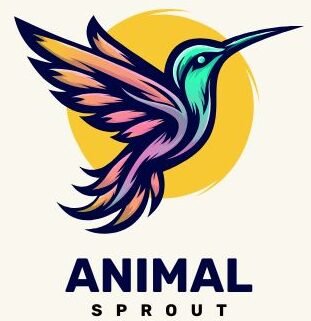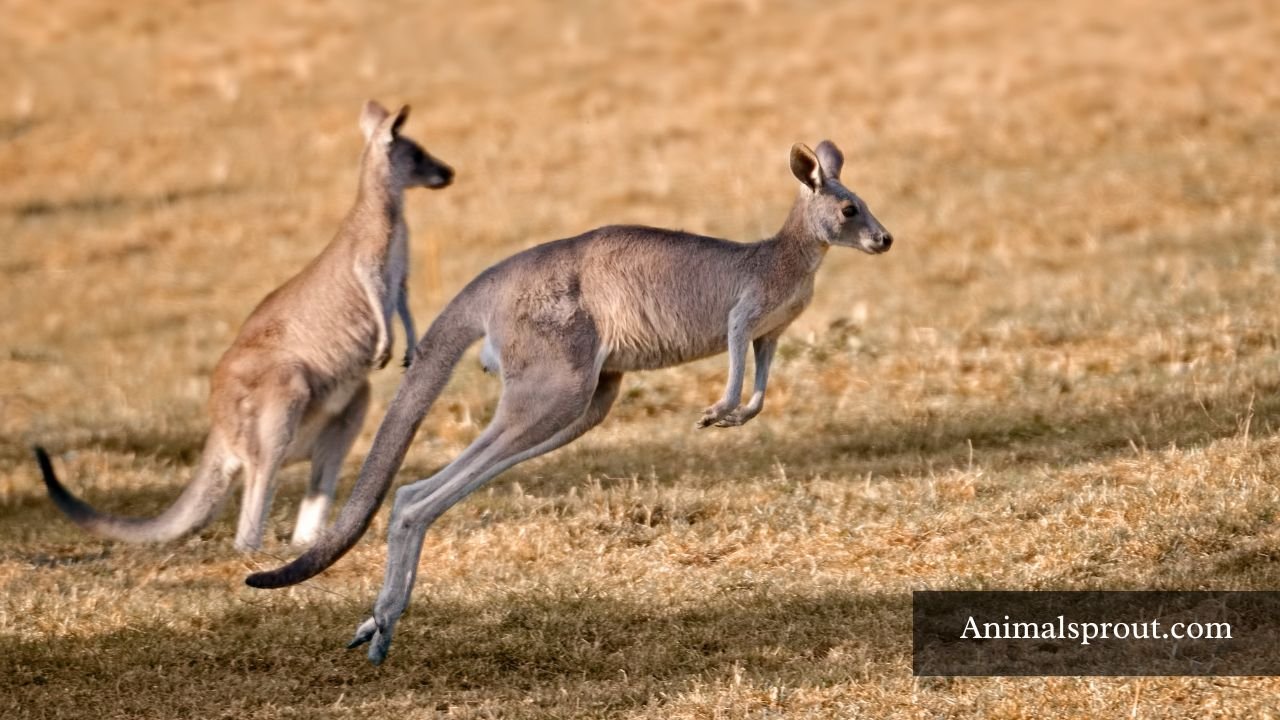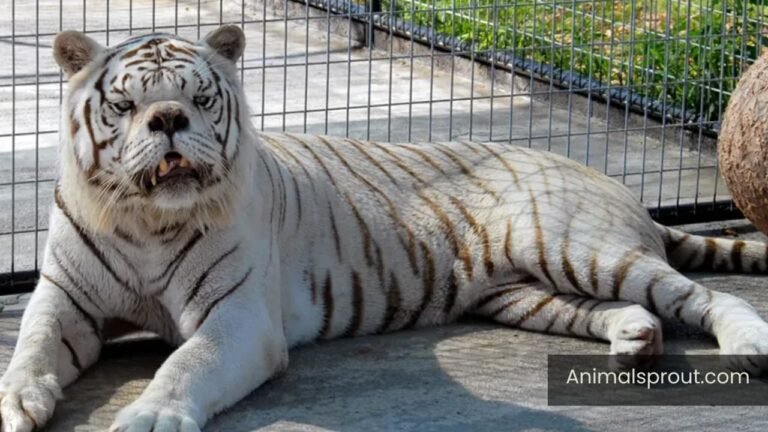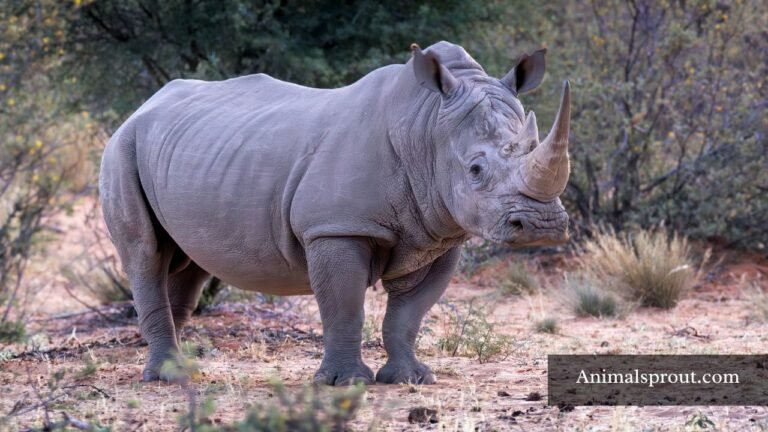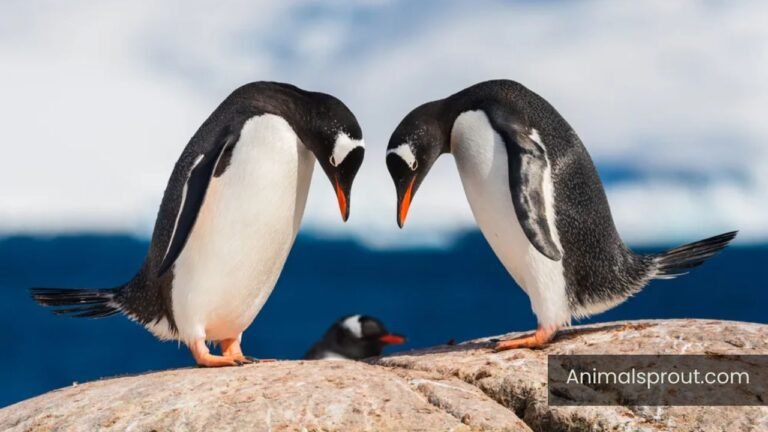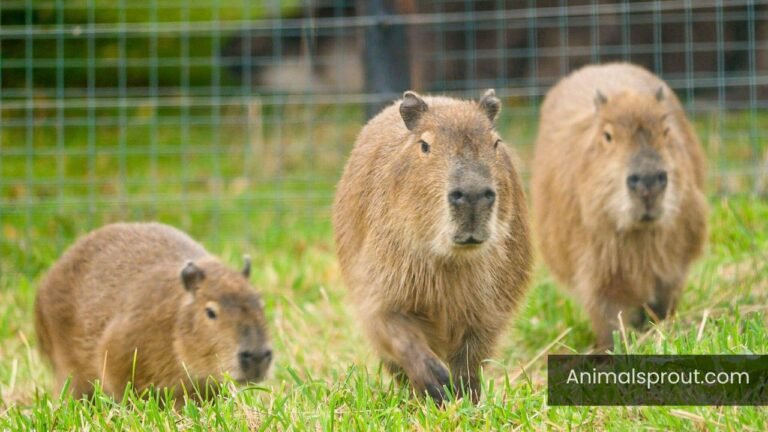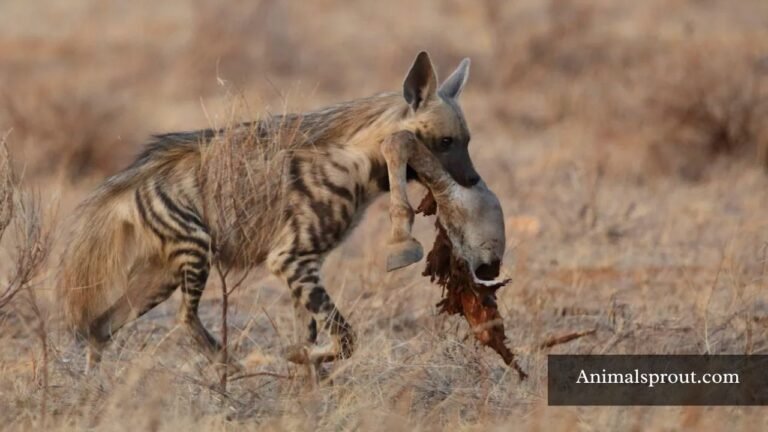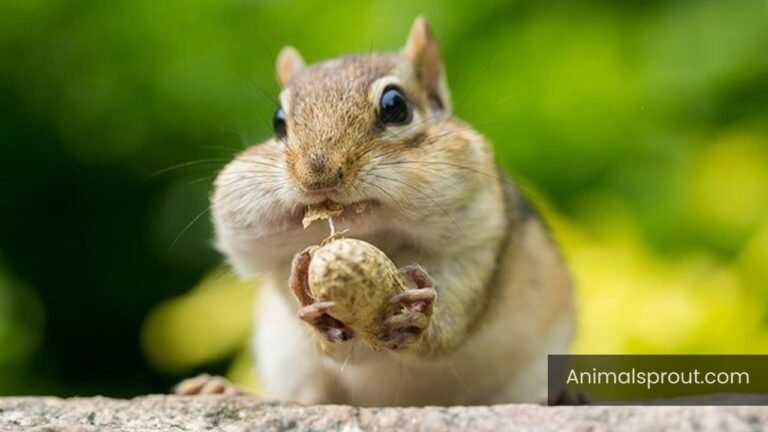Top 18 Animals That Walk on Two Legs In The World
While we often think of bipedalism as a uniquely human trait, there are several fascinating animals that also stand tall on two feet. In this article, we will explore the diverse world of Animals That Walk on Two Legs, shedding light on their adaptations, behaviors, and the evolutionary significance behind this remarkable trait. By the end, you’ll gain a deeper appreciation for these creatures and understand how their bipedalism compares to our own.
List Of Animals That Walk on Two Legs
Below is the list of animals that walk on 2 legs:
| Number of animals | Names of animals |
| 1 | Penguins |
| 2 | Kangaroos |
| 3 | Emus |
| 4 | Flamingos |
| 5 | Ostriches |
| 6 | Kangaroo Rats |
| 7 | Humans |
| 8 | Gibbons |
| 9 | Cassowaries |
| 10 | Bonobos |
| 11 | Wallaby |
| 12 | Cockatoos |
| 13 | Bears |
| 14 | Jerboas |
| 15 | Gorillas |
| 16 | Chimpanzees |
| 17 | Basilisk Lizard |
| 18 | Meerkats |
Penguins
Class: Aves
Diet: Carnivores
Among the unique creatures that walk on two legs, penguins stand out not just for their upright posture but also for their charismatic charm. These flightless birds have adapted to their cold environments with a distinctive waddle, which is both endearing and functional. Their bipedal movement allows them to navigate the icy landscapes of Antarctica and other regions with surprising agility, showcasing a remarkable blend of grace and resilience.
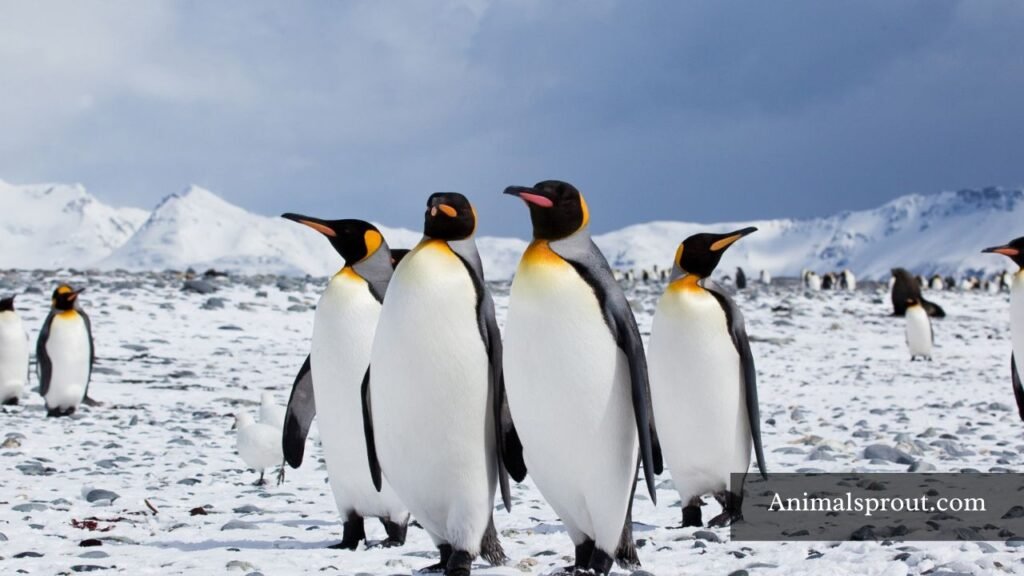
Interestingly, the mechanics of a penguin’s walk reveal much about their evolutionary journey. Unlike many two-legged animals, penguins have evolved a robust skeletal structure that supports their weight while allowing for efficient locomotion on land and in water. This adaptation highlights a fascinating trade-off: they may have sacrificed flight, but in return, they’ve mastered swimming, becoming agile hunters in their aquatic domain.
Kangaroos
Scientific Name: Macropus
Class: Mammalia
Diet: Herbivores
Kangaroos are fascinating creatures, not only for their iconic hopping but also for their unique ability to walk on two legs. This bipedal movement allows them to cover large distances efficiently while conserving energy, a crucial adaptation in their vast Australian habitat. Unlike many other animals that use a quadrupedal gait, kangaroos employ a distinctive combination of hopping and walking, which showcases their remarkable musculoskeletal design. Their powerful hind legs propel them forward, while their tail acts as a counterbalance, enabling them to maintain stability even when moving slowly.
Beyond their physical capabilities, kangaroos exhibit intriguing social behaviors while walking. When they’re on the move, these marsupials often engage in coordinated movements with others in their mob, demonstrating a level of social intelligence that is both captivating and complex. Observing a group of kangaroos navigating their environment on two legs reveals a dance of communication through body language, where subtle shifts in posture can indicate everything from readiness to flee from predators to the comfort of companionship.
Emus
Scientific Name: Dromaius novaehollandiae
Class: Aves
Diet: Omnivores
Emus are remarkable flightless birds native to Australia, known for their long legs and unique two-legged gait. These towering creatures can reach heights of up to six feet, making them the second-largest living bird species after ostriches. What sets emus apart is not just their size but also their surprising speed; they can sprint at speeds of up to 30 miles per hour, effectively utilizing their powerful legs for both agility and endurance. Their ability to travel vast distances in search of food showcases their adaptability to the harsh Australian outback, where resources can be sparse.
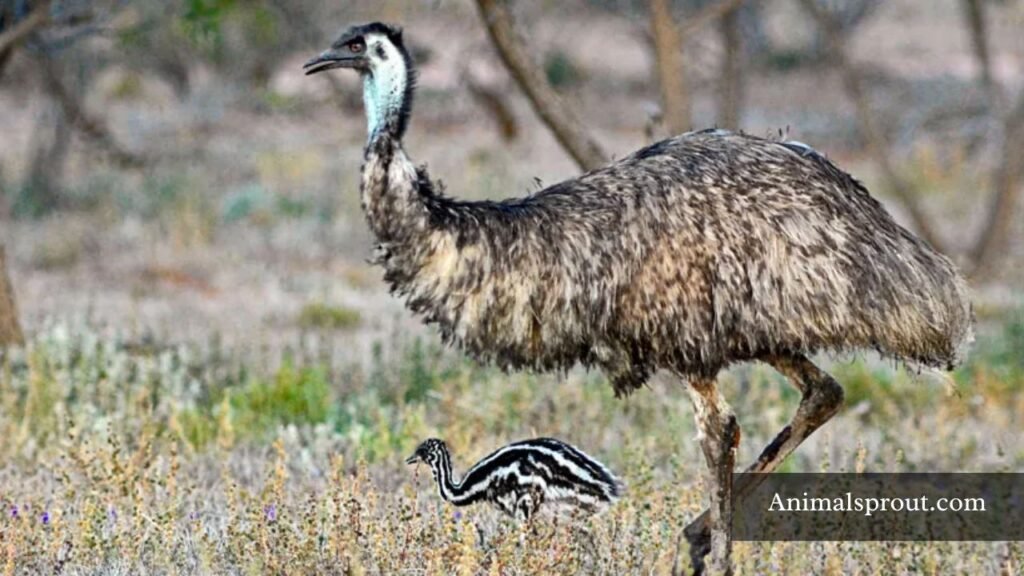
Beyond their physical prowess, emus possess intriguing social behaviors that reflect their intelligence. They often form small groups, engaging in a variety of vocalizations that communicate everything from alarm calls to mating rituals. Male emus take on the responsibility of incubating eggs and nurturing the chicks, showcasing a rare role reversal in the avian world. This unique parenting approach not only strengthens family bonds but also emphasizes the importance of teamwork in survival.
Flamingos
Scientific Name: Phoenicopteridae
Class: Aves
Diet: Omnivores
Flamingos are truly fascinating creatures, not just for their striking pink plumage but also for their unique mode of locomotion. These elegant birds are renowned for their ability to stand on one leg for extended periods, a behavior that has intrigued scientists and bird watchers alike. This one-legged stance is more than just a quirky trait; it serves a practical purpose. By tucking one leg close to their bodies, flamingos minimize heat loss in cold water while also reducing muscle fatigue — a remarkable adaptation for life in often harsh environments.
Moreover, flamingos’ two-legged gait is a marvel of grace and balance. When they do walk, they exhibit a distinctive, almost dance-like movement, with long strides that allow them to navigate their shallow, muddy habitats with ease. Their legs, proportionally longer than those of many other birds, are perfectly designed for wading through water while searching for food.
Ostriches
Scientific Name: Struthio camelus
Class: Aves
Diet: Omnivores
Ostriches are remarkable not just for their size, but for their unique adaptation to life on two legs. As the largest and heaviest living birds, they can reach up to nine feet tall and weigh over 300 pounds, yet they are astonishingly agile. With long, powerful legs designed for speed, ostriches can sprint at speeds of up to 45 miles per hour, making them the fastest-running birds on the planet. This impressive ability allows them to escape predators in the wild, showcasing the evolutionary advantage of bipedalism in an environment filled with threats.
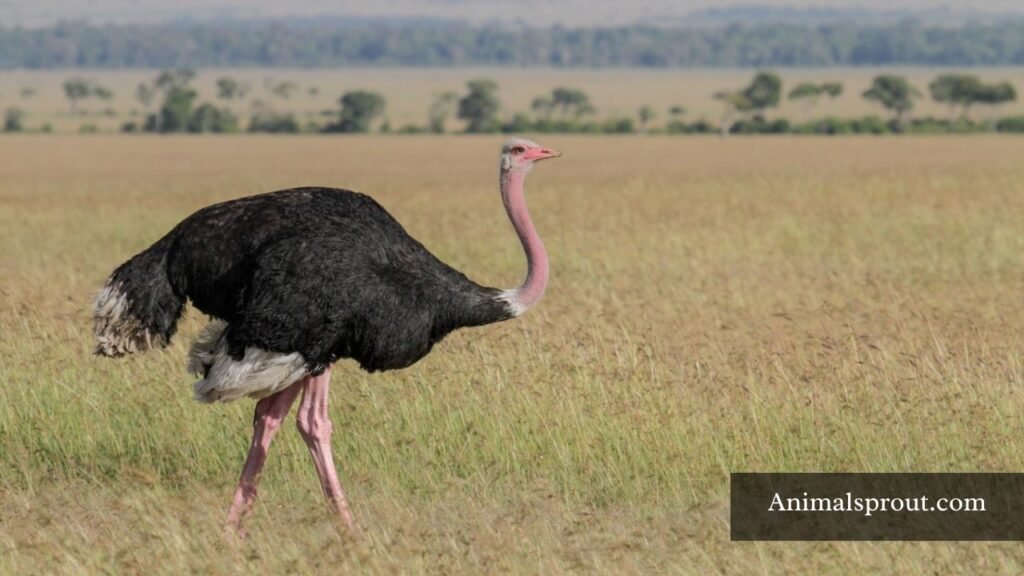
Beyond their remarkable physical capabilities, ostriches exhibit fascinating social behaviors that highlight their intelligence. They live in groups, often forming small family units that work together to forage for food and protect one another. Their bipedal stance not only aids in mobility but also enhances their ability to spot potential dangers from afar, as they can see across vast stretches of land. This combination of speed and awareness makes them adept survivors in the savannahs and grasslands of Africa, where they roam freely in search of sustenance.
Kangaroo Rats
Scientific Name: Dipodomys
Class: Mammalia
Diet: Herbivores/Granivores
Kangaroo rats, native to the arid landscapes of North America, are remarkable creatures that have adapted to their harsh environments in fascinating ways. These small rodents primarily use their powerful hind legs to hop, resembling their marsupial namesakes. Unlike typical rodents, kangaroo rats can traverse vast distances in search of food and water, showcasing a unique blend of agility and efficiency. Their bipedal movement is not just for locomotion; it also serves as a survival strategy, allowing them to escape predators with impressive speed.
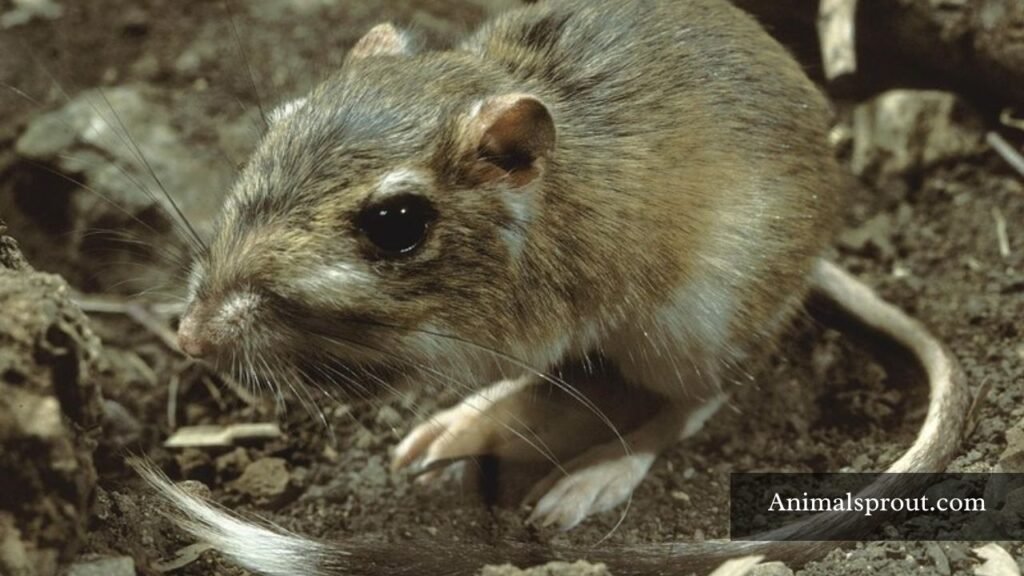
What sets kangaroo rats apart is their extraordinary ability to thrive without ever drinking water. Instead, they extract moisture from the seeds they consume, a trait that highlights their incredible evolutionary adaptation to desert life. Their specialized kidneys filter out waste while retaining water, making them masters of conservation in one of the most unforgiving climates.
Humans
Scientific Name: Homo sapiens
Class: Mammalia
Diet: Omnivores
Humans, the most advanced bipedal creatures on the planet, possess a unique blend of physical and cognitive traits that set them apart from other animals. Our ability to walk upright not only frees our hands for tool use and communication but also profoundly influences our social structures and cultural evolution. This two-legged gait has allowed humans to traverse diverse terrains, adapt to various environments, and explore the world in ways that other species cannot.
Yet, bipedalism is more than just a means of locomotion; it has profound implications for our brain development. As we navigated diverse environments on two feet, our cognitive abilities expanded, leading to problem-solving skills and social dynamics unseen in other species. This unique combination of mobility and intellect has enabled humans to adapt and thrive in virtually every ecosystem on the planet, highlighting the intricate link between how we move and how we think.
Gibbons
Scientific Name: Hylobatidae
Class: Mammalia
Diet: Omnivores
Gibbons, often referred to as the “lesser apes,” are fascinating creatures that stand out not just for their vocalizations but also for their unique mode of locomotion. While they are primarily known for their impressive brachiation — swinging through trees using their long arms — gibbons can also walk bipedally when on the ground. This ability is particularly intriguing because it showcases their adaptability, allowing them to traverse both arboreal and terrestrial environments with relative ease.
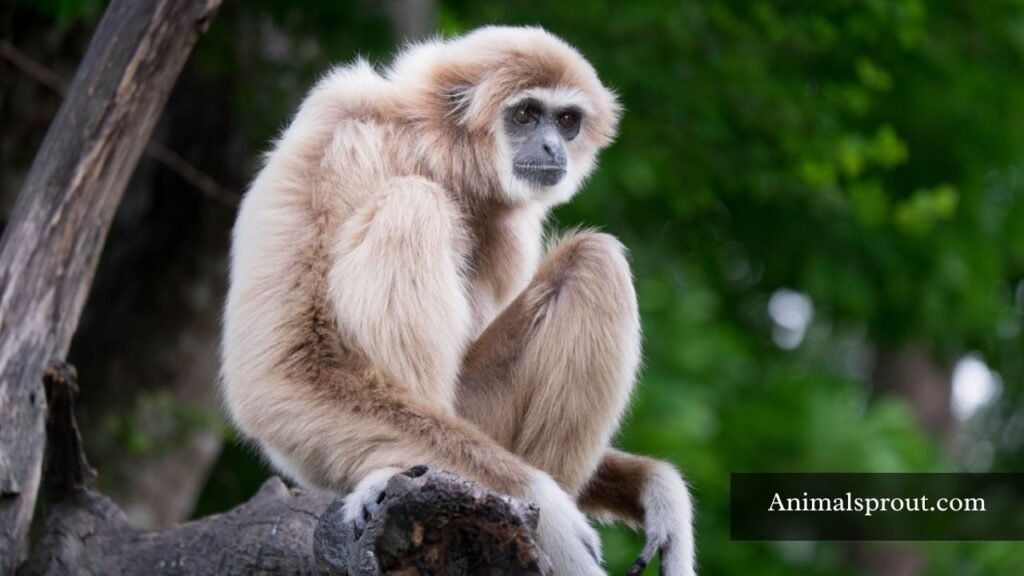
What makes gibbons even more captivating is their social structure and behavior. These animals typically form monogamous pairs and maintain strong family bonds, often seen frolicking together or engaging in duet calls that resonate through the forest. Their two-legged walking is not merely a means of travel; it serves as a social signal during these interactions, showcasing their playful nature and reinforcing familial ties.
Cassowaries
Scientific Name: Casuarius
Class: Aves
Diet: Omnivores
Cassowaries, often dubbed the “living dinosaurs” of the avian world, are truly remarkable creatures that defy conventional expectations of flightless birds. With their striking blue and black plumage, coupled with a vibrant casque atop their heads, these birds present a unique blend of beauty and intrigue. What sets cassowaries apart is not just their appearance but their impressive stature; standing up to six feet tall, they are one of the heaviest bird species, capable of running at speeds of up to 30 miles per hour. This incredible agility allows them to navigate the dense rainforests of New Guinea and surrounding islands with surprising grace.
Beyond their physical prowess, cassowaries play a crucial ecological role as seed dispersers in their habitats. Their diet consists largely of fruits, and as they forage through the underbrush, they inadvertently help maintain the health of their ecosystem by spreading seeds far and wide.
Bonobos
Scientific Name: Pan paniscus
Class: Mammalia
Diet: Omnivores
Bonobos are fascinating creatures that challenge our perceptions of primate behavior. Unlike their more commonly known relatives, the chimpanzees, bonobos exhibit a unique blend of social intelligence and physical agility, often opting to walk on two legs. This bipedalism is not just a quirky trait; it signifies their adaptability in navigating both forest floors and social hierarchies. Their upright stance allows them to engage in complex social interactions, making them adept communicators who use gestures and vocalizations to express emotions and intentions.
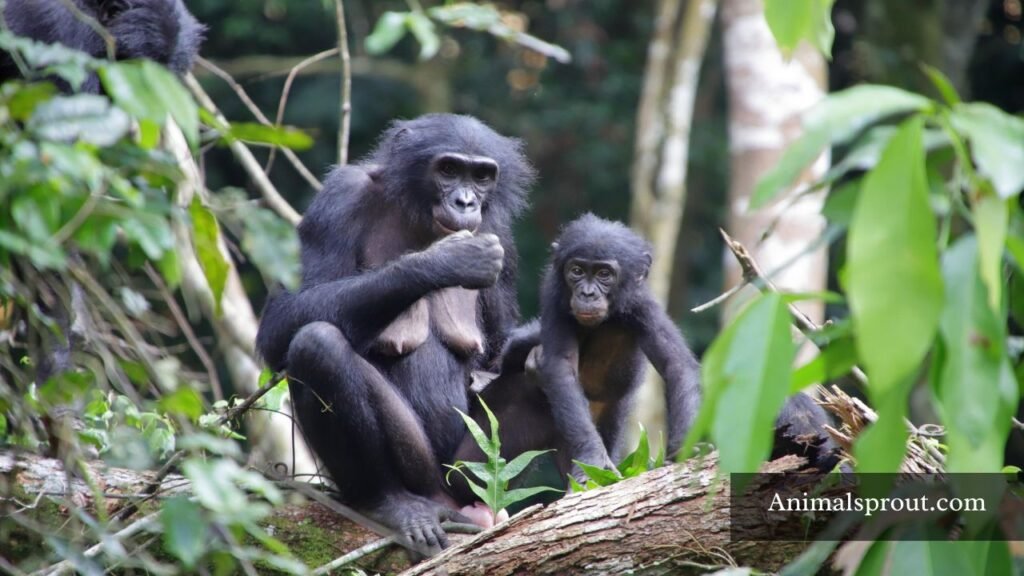
Moreover, bonobos are renowned for their peaceful nature, often resolving conflicts through social bonding rather than aggression. This propensity for cooperation is reflected in their upright posture during social play and grooming sessions, where they connect with one another on a deeper level.
Wallaby
Class: Mammalia
Diet: Herbivores
Wallabies, often overshadowed by their larger kangaroo relatives, exhibit a fascinating and agile form of bipedal locomotion that captivates both researchers and wildlife enthusiasts alike. These marsupials possess a unique ability to navigate their environment using their powerful hind legs, allowing them to hop gracefully over vast distances. What’s particularly interesting is how wallabies use their tail for balance while moving on two legs, showcasing an extraordinary adaptation that enhances their agility and stability.
Beyond their physical prowess, wallabies also display a remarkable level of social interaction within their groups. Often seen engaging in playful behaviors or grooming each other, these creatures foster strong social bonds that contribute to their survival in the wild. This behavior not only highlights their intelligence but also reflects the complex emotional lives of these animals.
Cockatoos
Scientific Name: Cacatuidae
Class: Aves
Diet: Omnivores
Cockatoos, often celebrated for their vibrant plumage and charming personalities, exhibit a fascinating trait: the ability to walk on two legs. This behavior is not merely an amusing quirk; it showcases their remarkable adaptability and intelligence. In the wild, these birds often navigate their arboreal environments by hopping or climbing, but they can also stand upright for balance when foraging on the ground. This bipedal stance allows them to scan their surroundings, making them more vigilant against potential predators while displaying their colorful crests.
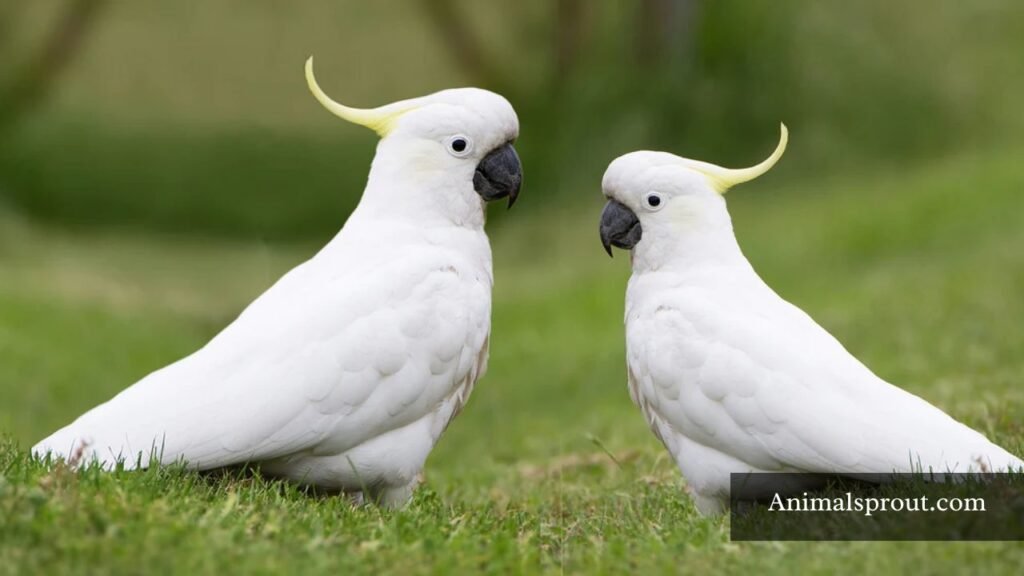
What truly sets cockatoos apart is their social nature and problem-solving abilities. Their two-legged movements are often observed during interactions with other birds or when engaging in playful behaviors. Researchers have noted that cockatoos can mimic human actions, including walking upright, which not only entertains but also highlights their cognitive flexibility. This mimicry is indicative of their capacity for learning and adaptation, suggesting that these birds are not just following instinct but actively experimenting with their environment.
Bears
Scientific Name: Ursidae
Class: Mammalia
Diet: Omnivores
Bears, often depicted as lumbering giants on four legs, possess an astonishing ability to walk on two legs when the situation calls for it. This bipedal stance allows them to reach higher branches for food, assert dominance during confrontations, or simply observe their surroundings more effectively. In fact, some species, like the American black bear, can stand upright for extended periods, showcasing their remarkable balance and strength. This behavior not only highlights their adaptability but also emphasizes their intelligence as they navigate a variety of terrains.
Interestingly, the act of standing on two legs is not just a physical display; it serves as a crucial social tool within bear communities. When bears rise up, they communicate a range of emotions — from curiosity to aggression — without uttering a sound. This non-verbal language plays a vital role in maintaining social hierarchies and avoiding unnecessary conflicts.
Jerboas
Class: Mammalia
Diet: Omnivores
Jerboas, small nocturnal rodents native to the deserts of North Africa and Asia, are fascinating examples of bipedal locomotion in the animal kingdom. With their elongated hind legs, these agile creatures can leap up to 10 feet in a single bound, making them not only adept at traversing their arid environments but also a marvel of evolutionary adaptation. Their unique method of movement allows them to escape predators quickly, while their large ears help dissipate heat and enhance their acute sense of hearing, vital for detecting danger.
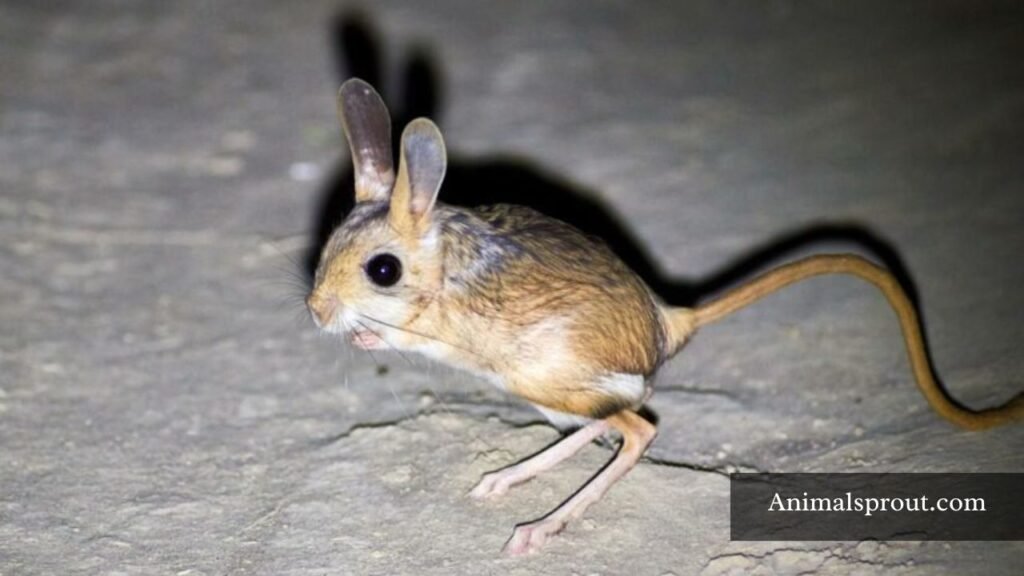
What sets jerboas apart is not just their remarkable jumping ability but also their intriguing social behaviors. Unlike many solitary rodents, some species of jerboas display a surprising degree of social interaction, often found in small groups. This behavior challenges the common perception of desert-dwelling animals as strictly solitary and highlights the complexities of survival strategies in harsh environments. Furthermore, jerboas have evolved specialized diets that primarily consist of seeds and plants, showcasing their adaptability and resourcefulness in the face of scarce food sources.
Gorillas
Scientific Name: Gorilla
Class: Mammalia
Diet: Herbivores
Gorillas, while primarily known for their impressive quadrupedal locomotion, showcase a remarkable ability to walk on two legs, particularly in certain contexts. This bipedal behavior often emerges during displays of dominance or when they need to carry objects, such as food or tools, over short distances. Watching a gorilla stand upright is a testament to their incredible anatomy; their powerful upper bodies and strong leg muscles allow them to momentarily defy their usual posture, highlighting an unexpected versatility in their movement.
Interestingly, this occasional bipedalism can also provide insights into their social dynamics and environmental interactions. For instance, a gorilla standing tall can communicate confidence and authority within its group, serving as a visual signal to others.
Chimpanzees
Scientific Name: Pan troglodytes
Class: Mammalia
Diet: Omnivores
Chimpanzees, our closest living relatives, exhibit a fascinating ability to walk on two legs, a skill that showcases their remarkable adaptability. While they predominantly move on all fours, they can shift to bipedalism, especially when carrying objects or displaying dominance. This occasional upright stance not only highlights their physical versatility but also reflects their complex social behaviors. Observations in the wild reveal that chimps will stand upright to communicate with one another or to gain a better vantage point — behaviors that hint at a sophisticated understanding of their environment.
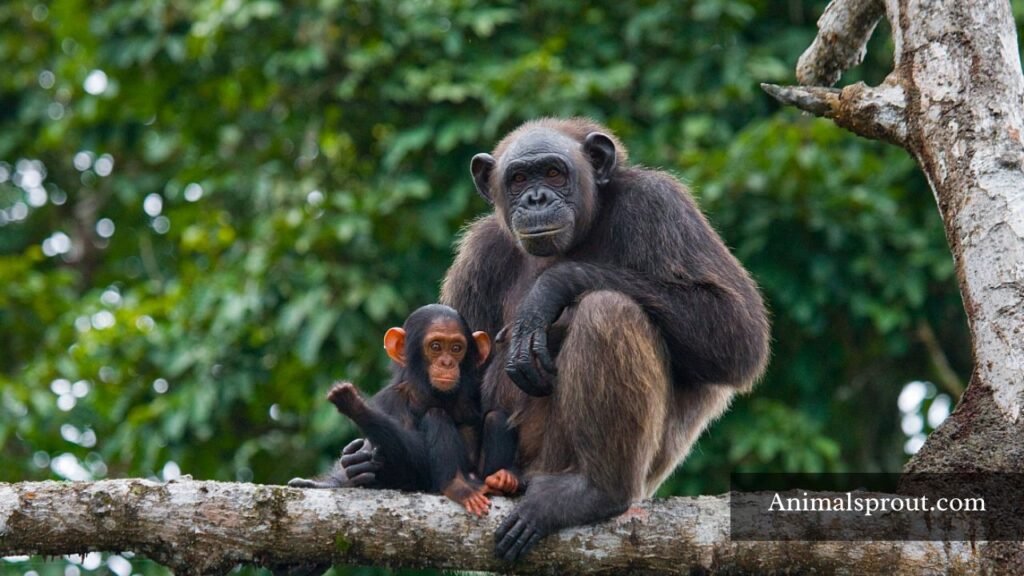
Basilisk Lizard
Class: Reptilia
Diet: Omnivores
The basilisk lizard, often dubbed the “Jesus Christ lizard” for its remarkable ability to run on water, showcases a unique adaptation that enables it to walk on two legs. This extraordinary feat is not just a whimsical trick; it’s a survival mechanism that allows the basilisk to escape predators with impressive speed. By utilizing its powerful hind legs, the lizard can sprint across the surface of water for short distances, creating a mesmerizing illusion of walking on liquid.
What’s particularly fascinating is the lizard’s anatomy, which supports this incredible locomotion. The basilisk has elongated toes that spread wide apart, creating a larger surface area that helps distribute its weight and prevent sinking.
Meerkats
Scientific Name: Suricata suricatta
Class: Mammalia
Diet: Omnivores
Meerkats, often recognized for their upright stance, exhibit a remarkable social structure that is as fascinating as their two-legged behavior. Standing on their hind legs, these small mammals utilize this posture primarily for vigilance — scanning the horizon for potential threats while maintaining a sense of community. This behavior not only enhances their survival but also reinforces their complex social bonds, as individuals take turns being the lookout, allowing others to forage and care for young ones.
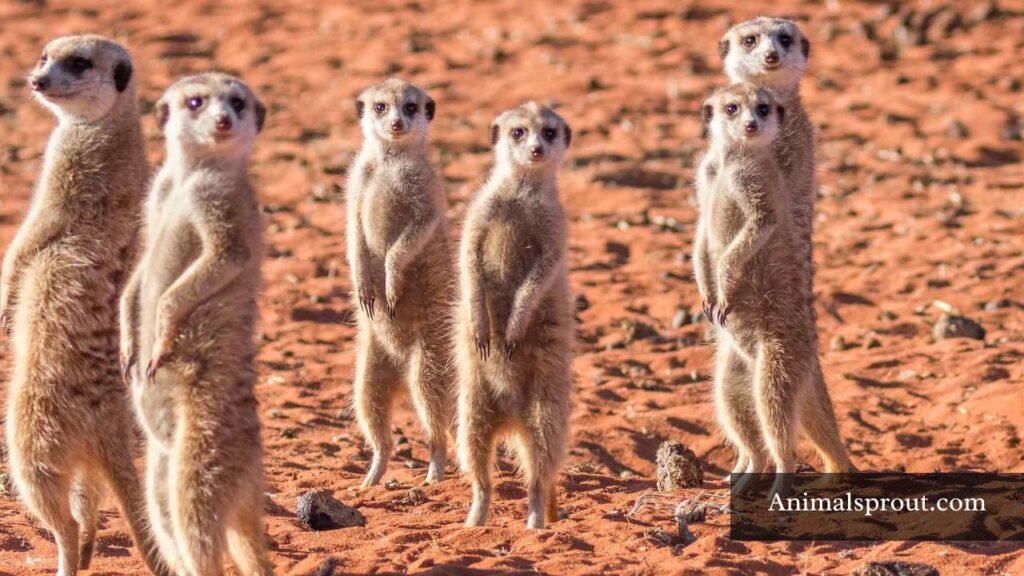
Beyond their iconic stance, meerkats demonstrate an extraordinary level of cooperation and communication. Their ability to convey messages through a series of chirps, barks, and tail movements creates a rich tapestry of social interaction that is both intricate and essential for their survival in the harsh environments of the African savannah. Interestingly, studies have shown that meerkats can even adapt their vocalizations based on the type of predator they spot, showcasing an impressive level of awareness and adaptability.
Readmore: Explore Top 15 Animals without legs In The World.
Final Thoughts
The fascinating world of bipedal animals showcases the incredible diversity and adaptability of life on Earth. From the nimble kangaroo to the intelligent ostrich, these creatures have evolved unique ways to navigate their environments using only two legs. Their adaptations not only highlight the wonders of evolution but also remind us of the intricate connections within ecosystems. Let us appreciate and advocate for the preservation of these extraordinary animals that walk on two legs.
FAQs
What are animals that walk on two legs called?
Animals that walk on two legs are called bipedal animals.
Are penguins bipedal?
Yes, penguins are bipedal. They primarily move on two legs, using their flippers for balance while waddling or walking. This bipedalism is quite unique among birds, as most are adapted for flying. Instead, penguins have evolved to be excellent swimmers, which is reflected in their body structure.
Can cockroaches walk on two legs?
No, cockroaches cannot walk on two legs. They are primarily designed to move on six legs, which provide them with stability and speed.
Are kangaroos bipedal?
Yes, kangaroos are bipedal. They primarily move by hopping on their powerful hind legs, which allows them to cover large distances efficiently. Their unique anatomy, including strong muscles and a long tail for balance, supports this mode of locomotion.
